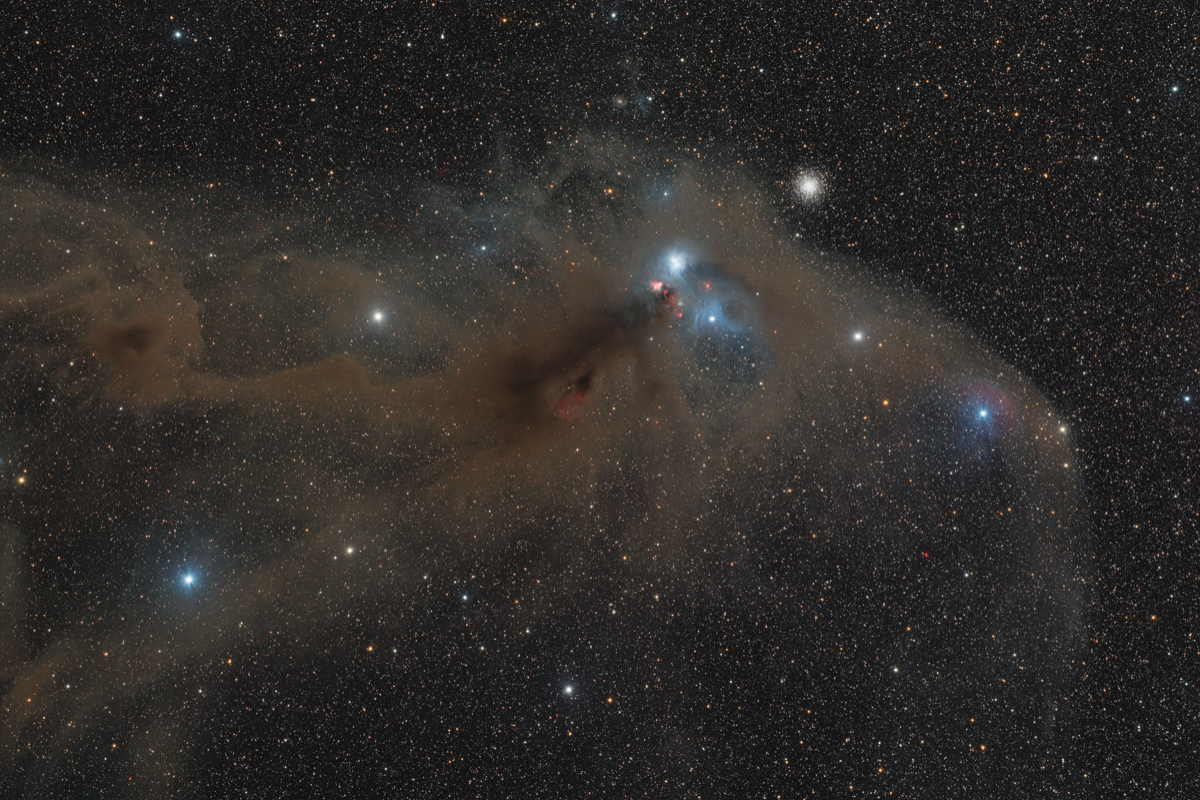
[back] NGC 6723/26/27/29 in Corona Australis [NED]
Big, 100%
image version / Große, 100% Bild-Version (9430 x 6279
pixel, 1.464"/pixel)
100%
annotated image / 100% beschriftetes Bild

|
(c) 2024 All astro photo images are copyrighted. They may not be used or reproduced without explicit written permission from the authors. |
|
0.5 degree |
|
About this Image / Über dieses Bild
| Camera: | Moravian C3-PRO-61000 Mono CMOS |
| Image Type, Orientation: | L-(R+Ha)(GB+OIII) Color Composite, North is at 12:00 |
| Exposure time: | L: 46 x 300s, RGB: 13/16/12 x 300s, 21 x 900s Ha, 44 x 900s OIII (7:15h + 16:15h (Ha,OIII)) |
| Exposure date: | July 4th,5th 2024 |
| Location: | Capella Observatory South at Kiripotib Astro Farm, Namibia |
| Filter: | Astronomik Deep-Sky Deep-Sky RGB plus 6nm Ha, OIII filters on Moravian EFW-3L-9-II External Filter Wheel |
| Instrument: | "Callisto", a Takahashi FSQ 106N, 530mm focal length, 106mm aperture, f/5 on modified Losmandy G11 (high res encoders with OnStepX) |
| Photographer: | Rainer Raupach, Josef Pöpsel, Frank Sackenheim |
| Remarks: |
The dust cloud visible in the image is about 500 light
years away from us and has an apparent size of several moon diameters. In
the right part, this dust cloud reflects the light of the bright stars
nearby and therefore appears as a blue reflection nebula. Several reddish
Herbig-Haro objects (HHOs) are striking in the image, which was exposed
quite deeply in Ha, among other places. These are formed when the dust in
particularly dense areas of the cloud clumps together so much due to its own
mass that young stars are formed, which in turn illuminate the remaining
dust with their own light or ionize the gas surrounding them. Despite the deep exposure through an OIII filter (11h), only a few areas can be seen in the image that are clearly influenced by this emission line. NGC 6723/26/27/29 are located in the constellation Southern Crown and are popular objects in the southern sky. In mid-northern latitudes they can only be seen very close to the horizon, if at all. |
|
|
|
| Bemerkungen: |
Die im Bild sichtbare Staubwolke ist von uns etwa 500
Lichtjahre entfernt und hat eine scheinbare Größe von mehreren
Mond-Durchmessern. Im rechten Teil reflektiert diese Staubwolke das Licht
der in der Nähe liegenden hellen Sterne und erscheint deshalb als blauer
Reflexionsnebel. Auffällig im Bild, das unter anderem in Ha recht tief
belichtet wurde, sind mehrere rötliche Herbig-Haro-Objekte (HHOs) . Diese
entstehen, wenn der Staub in besonders dichten Bereichen der Wolke aufgrund
seiner eigenen Masse so sehr verklumpt, dass junge Sterne entstehen, die
wiederum den restlichen Staub mit ihrem eigenen Licht beleuchten bzw. das
sie umgebene Gas ionisieren. |
Back to the Diffuse Nebulae Overview / Zurück zur Diffuse-Nebel-Übersichtsseite